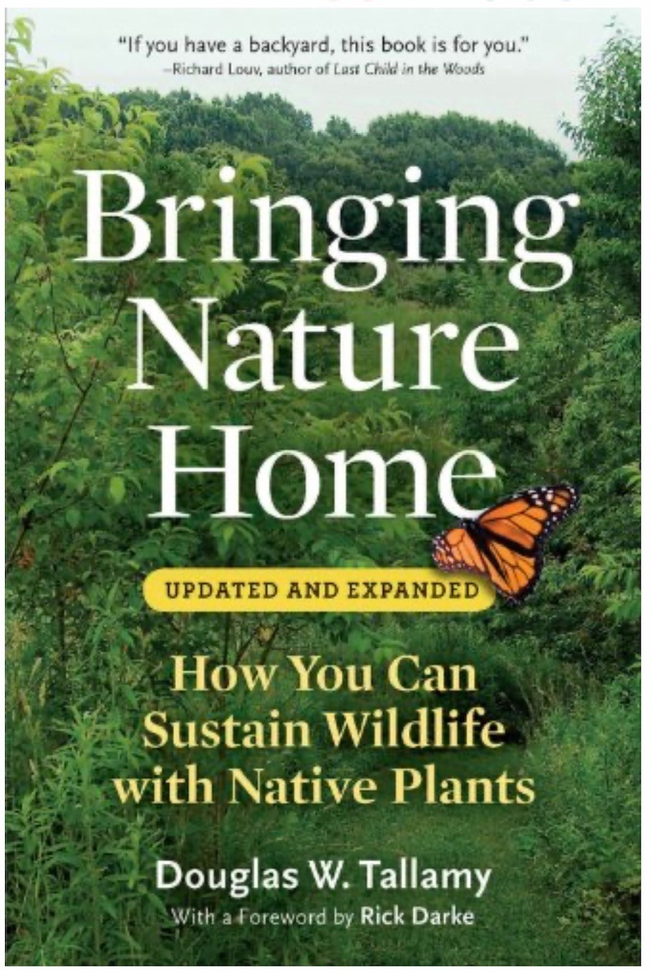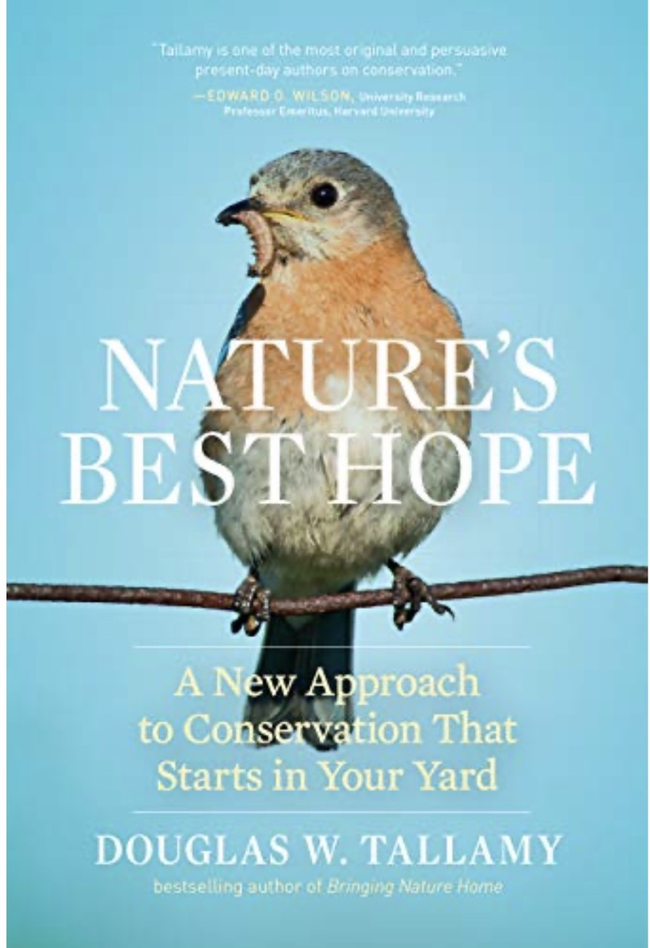- Reviewed by: Maria Krenek
Douglas W. Tallamy NATURE'S BEST HOPE: A NEW APPROACH TO CONSERVATION THAT STARTS IN YOUR YARD. Timber Press, 2019 Portland, Oregon 254 pages.
Douglas W. Tallamy BRINGING NATURE HOME: HOW YOU CAN SUSTAIN WILDLIFE WITH NATIVE PLANTS Timber Press, 2007 Portland, Oregon 265 pages.
Each and every one of us are Nature's best hope. This is eloquently stated by Tallamy in his most recent book, NATURE'S BEST HOPE A NEW APPROACH TO CONSERVATION THAT STARTS IN YOUR YARD. The book builds on the information and perspective of his earlier book BRINGING NATURE HOME: HOW YOU CAN SUSTAIN NATURE WITH NATIVE PLANTS. He does not need to shoulder alone the burden of his conviction that the healthy integral workings of the natural world are being disrupted and destroyed by our actions in lives derailed from the living systems around us. He outlines actions that can be taken one person and one yard at a time to retrieve a balance between the natural world and a world created for our benefit alone. Ha, but that is the rub, isn't it? Our wellbeing is more and more revealed to be dependent on the wellbeing of the world around us. We can no longer ignore the true reality of the place we must occupy in the greater scheme of many interlocking, interdependent and complex participants and activities that define life on this planet. All too slowly, observation, research, and education are seeping into our individual and collective experience to show us the true reality of our place in the natural world. Are we listening? Do we see it?
Native plants are the platform he uses as fundamental to sound natural activities. Intact native plant systems are crucial to success. He begins by revealing facts about plants and insects, a habitat or human practice and what really happens. Terms and concepts are defined to enable a deeper understanding towards new perspectives, practices and activities that work for the general restoration and support of healthy sustainable habitats and resources. He outlines and urges the implementation of ecological principles that are based in real information from the science of sound observation, research and common sense. Mythologies and unsubstantiated assumptions do not have a place in this scheme. Hard facts based on hard work in really seeing what is going on around us is the only path for true knowledge and implementations that work to heal and sustain a healthy and productive environment.
And yes, he does make real suggestions, shares case studies and the science behind solutions for us to integrate into our daily practices. These down to earth, straight forward and practical methods are possible for us. Many color photos identifying insects, plants and devices help communicate practical information to us for best practices. A question and answer section of the book crystalizes our understanding to some of the questions raised on a broad range of topics. From minimizing our lawns, maximizing space for native plants and beneficial “weeds”, enhancing habitat for insects and wildlife and using organic and sustainable means and methods one yard at a time, we can make a positive change. A message of hope is there. He reminds us that nature is resilient. He tells us if we act now that restoration to counteract the destruction will make a difference. Do we have the collective wisdom to make it happen?




